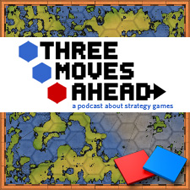War is a human endeavor, and the quality of the humans in charge matters.
The challenge for game designers has been how to separate the impact of the leader from the quality of the troops under him. What is Patton’s value added to a well trained armor division? How much of Prussia’s power was based on the military reforms and not Frederick’s battlefield brilliance?
In his latest post about the military model in the development of Imperium, Michael Akinde outlines how he intends to reflect both individual qualities and cultural preferences.
The plan is that some cultures (for example Gallic culture and some variants of Hellenistic culture) may have a Heroic ethos, meaning that their armies will actually fight worse if the General does not fight in the front line (reflecting the cultural pressure). Whether fighting in the front line or lurking at the back like a smart Roman, the Combat skill will be important for the General, as it determines the likelihood of the general surviving episodes where his life is put into danger… such as of course in battle.
His model is an familiar one, emphasizing three particular aspects of generalship. It’s not a big leap from Command/Combat/Guile to the Fire/Shock/Maneuver/Siege in Europa Universalis or Ageod’s long list of traits or even the numerical rating for various abilities in Romance of the Three Kingdoms XI. The assumption is that specific types or phases of battle will call on specific skills, each of which will have to be judged independently – as Akinde puts it, “The player should notice, in short, the difference between a Varro and a Hannibal.”
But wherever leaders have been involved, the differences between Varro and Hannibal or Bazaine and Moltke or Haig and Foch have never really been the issue for me. Someone gets bad stats and someone gets good ones. The difference between Pyrrhus and Antiochus matters more; it’s the margins of greatness that will matter to people interested in this sort of game.
Historically based games that deal with leadership have the problem of familiarity. If I am playing a game about the American Revolution, familiarity pushes me to use Francis Marion as a guerrilla leader and Benedict Arnold
as a guerrilla leader and Benedict Arnold as a battlefield commander – or maybe resist giving him a command altogether.
as a battlefield commander – or maybe resist giving him a command altogether.
But there comes a point where great fame means, for the developer, great stats. And if I can use Francis Marion to tear up British troops in civilized Pennsylvania, then is he still the Swamp Fox or is he just an agglomeration of numbers? What’s his “kill” factor? Paradox got around that by just killing historical leaders for most games; sure you can start with Wallenstein and Tilly, but most people won’t. If Caesar, however, is straight eights or nines, and so is Pompey, then how do you capture the essential differences between the two, the effective recklessness of the former and the efficient caution of the latter? In the war against Hannibal, Fabius and Marcellus had very different approaches, but the only distinction that Akinde’s three numbers would catch would be the latter’s willingness to expose himself to danger – the “combat” variable.
Games are, often, math. Plus here, minus there. And your situation will determine which pluses and minuses matter. But there’s an inevitable disappointment when, say, Hannibal gets killed in a shipwreck at 18. Or when a player decides that Pompey’s administrative brilliance means he’s more useful collecting taxes in Spain than fighting the hordes of Mithridates. In strategy games that use leaders, historicity always runs headlong into player choice. It’s inevitable and desirable; these design conflicts are where brilliance is born.
It’s still much too soon to consider Imperium anything like brilliance. But keep an eye on Akinde’s blog for more as he explains his military strategy.

